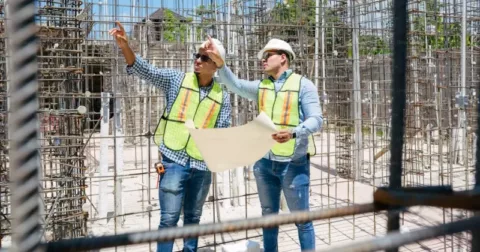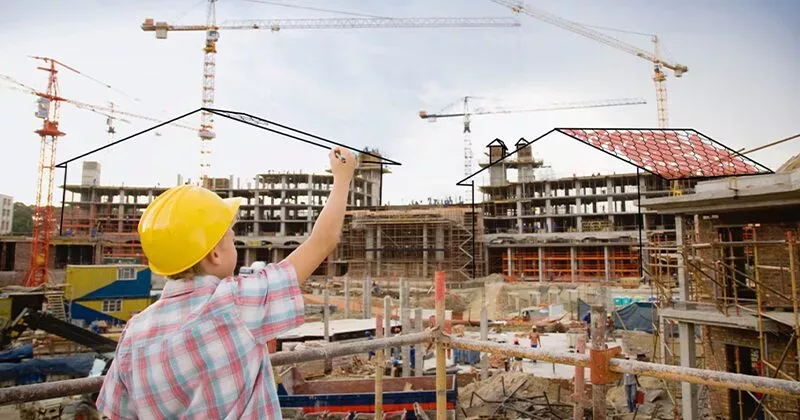10 mins read
Construction Industry in South Africa: The Role of Technology

The long-term future of the African construction industry appears to be bright, even as inflation and weak economic activity produce a temporary slowdown. In South Africa, the most developed construction market in Sub-Saharan Africa, the industry is expected to grow at an annual rate of 3.5% through 2029. This growth will be propelled by private and government investment in renewable energy, as well as many new transportation infrastructure construction projects.
To ensure these projections become a reality, the construction industry in South Africa must overcome additional challenges that have emerged in recent years, including rampant project delays, shrinking margins, and issues with timely subcontractor payments. These challenges require greater attention to construction contracts by both contractors and subcontractors to prevent ongoing disputes once projects are completed, and a revitalization of the local labor pool to ensure high-quality results and accountability.
The South African government is doing its part to provide lucrative contract opportunities for construction professionals, with a USD 12.4 billion (ZAR 230 billion) infrastructure pipeline unveiled in 2024. Ongoing investment is essential, but an influx of technology to improve design, safety, collaboration, and contract management practices may be the most critical key to success.
Despite the scale of the South African construction industry and the demonstrated benefits of technology adoption in other industries, the sector has been slow to invest in modern hardware and especially software. This is in part due to Africa’s lower levels of internet penetration and the existence of a large, informal construction sector. Read on to explore the state of construction technology in South Africa in greater detail.
Understanding the Challenges of the Construction Industry in South Africa
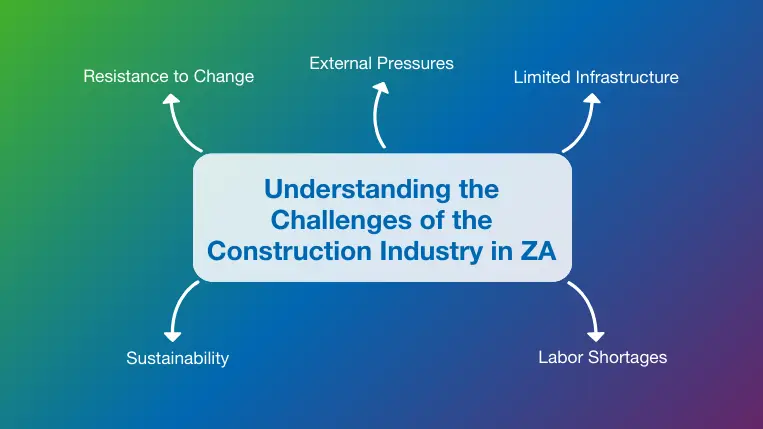
Technology is one of the best solutions to address the variety of challenges faced by the building and construction industry in South Africa, but software tools alone cannot provide all the answers. The diverse mixture of cultural, political, and economic pressures also makes education, training, and collaboration essential ingredients to reach the next plateau. The challenges standing in the way of the construction industry transformation in South Africa include:
Resistance to Change
While the industry has many skilled artisans, most of them may have only worked in construction, thereby limiting their exposure to the benefits of technological advances in other sectors.
The proliferation of small and medium-sized enterprises (SMEs) in the industry often sees larger projects involve a great many specialists, but only small-scale stakeholders. While many SMEs have invested in software and technology, they may have chosen different software packages, which can result in system conflicts and miscommunication.
The perceived complexity and costs of modern technology (including the cost of hiring specialists) can also act as a deterrent to investment. Modern technology can be daunting to the uninitiated, and the outcomes by which contractors and construction workers typically measure success are not always self-evident.
External Pressures
Given the technological advances in other industries, the momentum for change may soon become impossible to ignore, with companies that continue to resist transformation finding themselves at a serious disadvantage.
The challenges faced by the construction industry in South Africa include stagnant productivity and increasing costs driven by inflation, various labor issues that prevent projects from being properly staffed. These factors combine to create an increased need for technological solutions.
Measures implemented to mitigate the lingering impact of the pandemic have also increased the focus on technology as a solution in a world where remote working is part of the new normal, although these practices are often at odds with the in-person requirements of the construction industry.
Limited Infrastructure
Even as the South African government gives the green light to massive infrastructure projects covering transportation, housing, energy, and water resources, the current lack of developed infrastructure remains a serious obstacle. Rural construction sites lacking proper roads and water infrastructure can be difficult to manage, with large sites struggling to address the basic needs of thousands of workers while vendors rely on inadequate railway and highway transportation to deliver materials on time.
Infrastructure gaps also make it difficult to implement modern technologies, including cloud-based software solutions that need internet connectivity and reliable power grids to operate. These obstacles will continue to make infrastructure development a priority, as many project teams attempt to improve efficiency without the benefit of the latest tools and technologies.
Labor Shortages
Construction in South Africa currently provides employment for over 50,000 individuals, making it one of the country’s largest sources of work. Like many other countries, South Africa is also facing labor shortages that make it difficult to plan and staff new projects.
An aging workforce, the absence of adequate training and construction certification programs, and a lack of interest from younger workers are some of the key factors making it more difficult to meet the growing demand for labor. This shortfall is even more critical when it comes to the digital skills and technologies needed to compete in today’s construction industry.
Building information modeling (BIM), automation, drones, and the internet of things (IoT) are just a few of the available digital construction technologies that bring instant advantages and efficiencies to project teams and clients. Yet, without the help of skilled and educated workers to implement these new practices, their addition has very little impact.
Sustainability
Sustainable practices have been given a high priority by the South African government, with a commitment to reduced carbon emissions turning into almost USD $36 billion in recent investments in new solar and wind power infrastructure to minimize reliance on traditional coal burning. Green buildings also contribute to sustainability efforts by limiting waste, water consumption, and deforestation.
The benefits of green building practices in South Africa are not disputed, but the implementation remains challenging. High upfront costs, limited local expertise, material shortages, and a lack of supportive regulatory policies are among the challenges builders face. Despite these obstacles, many of the top construction companies in South Africa are taking it upon themselves to make sustainability a high priority.
How Technology Can Enhance the Building and Construction Industry in South Africa
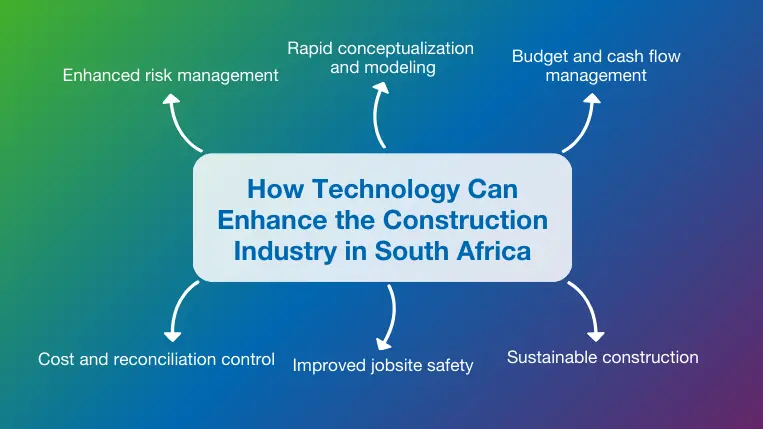
The challenges faced by the construction industry in South Africa make it an ideal candidate for technology adoption. Additional regional factors, such as multiple disparate locations, inherently hazardous construction sites, and overcrowding in the sector, all provide an opportunity for companies that adopt more advanced technology to gain a distinct competitive advantage. These advantages include productivity and efficiency gains, in addition to the following benefits:
Enhanced risk management
Efficient construction risk management strategies are always beneficial, since they help to identify potential design, safety, cost, and productivity issues, and prevent problems before they happen. With so many geographic, labor, and material issues to contend with, big construction projects in South Africa need software tools to make risk management more feasible and analyze data efficiently. Advanced analytics and risk modeling algorithms allow project teams to prioritize and address the most serious risks first.
Rapid conceptualization and modeling
Contractors and casual observers marvel at the speed and precision of building in countries like the UAE, China, and the US, as they turn innovative new designs into reality quickly. Building information modeling (BIM) uses digital conceptualization, testing, and collaboration practices to allow designers and builders to create these complex structures faster. BIM also improves efficiency and safety during the construction process, but adoption in South Africa has remained relatively low. For this reason, a focus on training more construction professionals in South Africa on BIM construction management and design could have a significant impact on the future of the industry.
Budget and cash flow management
The aforementioned project delays, shrinking margins, and subcontractor payment disputes threatening the construction industry in South Africa are easily preventable with the right project management and accounting software solutions. These tools make real-time expense and budget tracking possible to point out cash flow issues early and prevent disputes in the later stages of construction. Software tools also minimize errors and improve forecast accuracy to avoid surprises like overruns and late payments.
Sustainable construction
Clients and project owners in South Africa realize the benefits of sustainable buildings that help to conserve precious resources as they minimize greenhouse gas emissions and other types of pollution. As the top construction companies in South Africa strive to incorporate green building practices, cost estimation software can help them to calculate embodied carbon in materials while BIM software platforms model building efficiency prior to construction. Technology also makes it easier to track performance against green building standards in South Africa, and obtain certifications from organizations like the GBCSA.
Improved jobsite safety
High accident and fatality rates on South African construction projects are a major concern, with studies showing that training and awareness are often inadequate, and immediate improvement is needed. Giving health and safety issues a higher priority goes beyond consistent training and adequate personal protective equipment (PPE).
Technology like drones, the IoT, and construction digital twins make it easier to spot and correct safety issues in real time. At the same time, software solutions allow project managers and contractors to track safety training progress and employee certifications while providing automated alerts and updates when new issues are found on the construction site.
Cost and reconciliation control
Managing multiple suppliers and subcontractors on busy and complex projects has been a major problem for the construction industry in South Africa. Software tools make it easier to match invoices, receipts, and payments correctly while avoiding costly errors. Procurement software allows project managers, purchasing teams, and other stakeholders to centralize their supplier information and make it easier to retrieve data for performance assessments, bid reviews, and other assessments.
Construction Projects in South Africa
Successful construction projects in South Africa are removing barriers by showing what is possible with the help of the latest software and technology.
Venetia Diamond Mine, Musina
Owned by the well-known De Beers Group, the Venetia Diamond Mine is South Africa’s largest diamond producer. A USD $2.1 billion expansion project is underway to convert the site from an open pit mine to an underground mine and extend its useful life by over 30 years. This project is another example of technology at work, with automation driving the new mine operation made possible by advanced software tools and intelligent mining machines. RIB Candy construction management software has been utilized since the earliest stages of the project to optimize project management, cost control, and estimating processes.
Washirika 3 Oaks, Sandton ZA
In 2021, Washirika 3 Oaks (W3O) was one of the many South African construction firms struggling with manual methods and spreadsheets as they tried to get their project finances and costs under control. Despite 16 years of experience, W3O was still discovering cost overruns late in projects that should have been found earlier.
The company selected RIB BuildSmart cost management software to address these issues, and immediately experienced improved reporting, tracking, and decision-making, along with reduced errors and more accurate estimates. These benefits helped W3O double their revenue by 2023.
What Needs to Change
While South Africa’s construction industry remains significantly under-digitized, resistance to change can be overcome through structured change management and improved support for workers. Carefully planned integration is more likely to succeed than ad hoc implementation, so patience will be required to complete this important transition.
Innovators are also needed to overcome the somewhat insular nature of the industry. These tech champions may have to be recruited externally; that is, from sectors that have already experienced the benefits of investment in new technology.
Ultimately, increased technological adoption in the South African construction industry will depend on two key factors: proactive leadership within companies, and an enhanced appreciation for the impact that technology can have on people and projects.
Conclusion
With the leading construction companies in South Africa now showing a keen interest in BIM technology, sustainable practices, and construction software tools, the long-term industry potential seems limitless. A successful digital transformation relies largely on the willingness to change from companies but also on having the support of a trusted software provider to guide the transformation.
At RIB Software, we have developed an integrated portfolio of powerful solutions, allowing construction projects in South Africa and around the world to weave a digital thread through their most essential tasks.
One of these solutions is RIB Candy, our professional planning, takeoff, and estimating solution targeting the unique needs of construction professionals. A unique, user-friendly interface ensures teams can collaborate through a single source of truth, eliminating silos and aligning time and money for successful projects. Get your free demo today and discover what RIB Candy can do for your business!
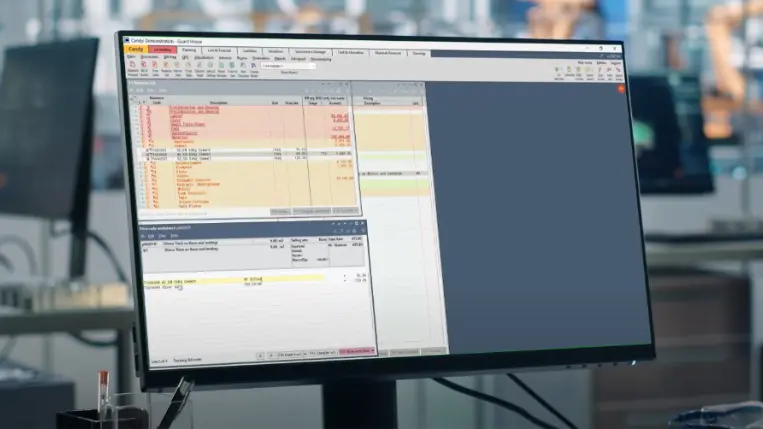
Most Recent
10 mins read
11 mins read
11 mins read
10 mins read
Blog Categories

Ebook
